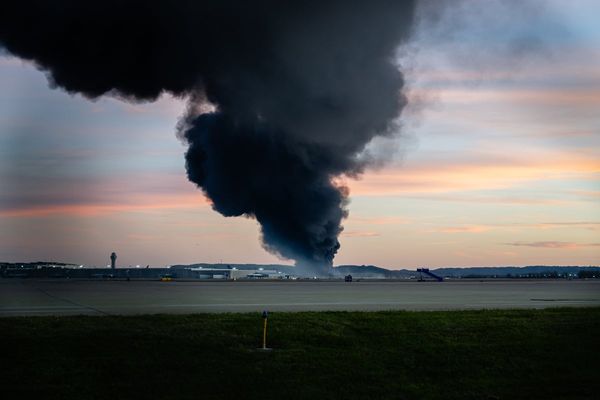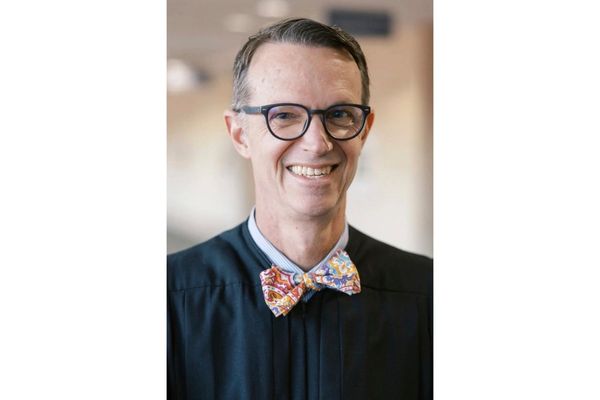
“I want to decide my life for me,” says Esme Nichols, the fictional protagonist of Pip Williams’ bestselling 2020 novel The Dictionary of Lost Words.
Esme has spent her whole life around the desks of the scriptorium, or “scrippy”: the workplace of the real Sir James Murray, lead editor of the Oxford English Dictionary. Murray worked on the dictionary from 1879, starting at the letter A, until his death in 1915, when they were working on the volumes for S. With her mother dying in childbirth, Esme grew up at the feet of her father and the other men who worked for him.
Williams’ novel uses this historical canvas to tell a girl’s coming-of-age story, set in a world where women were so often unable to map out their own lives. From a four-year-old girl in 1886 to a fully grown and complicated woman in 1915, Esme’s growing up happens against the backdrop of the scriptorium’s mammoth project, as the world changes around her. Throughout it all, Esme is collecting her own words – slang words, vulgar words, women’s words – which aren’t considered fit for the dictionary proper.

In Verity Laughton’s stage adaptation, directed by Jessica Arthur in a co-production from the State Theatre Company of South Australia and Sydney Theatre Company, a winsome Tilda Cobham-Hervey plays Esme. The wide, bright stage (design by Jonathon Oxlade) is hugged by a wall of softly backlit squares: these are the pigeonholes which house the words of the scrippy; the letterboxes of Oxford; the household shelves, holding teapots.
Much of Williams’ story is quiet, set among small relationships in the shed where the words of the dictionary are sorted, and among the slips of words Esme collects from women to tell the stories the official record won’t remember. But she occasionally brings us out into the much wider world – a busy market or pub, the suffragette marches, the hospitals filled with shellshocked servicemen.

In this wider world, it is a complex story to bring to the stage.
Verity Laughton’s adaptation feels at its most vital in the quiet moments – between Esme and the Murrays’ maid, Lizzy; between Esme and her father; between Esme and her boyfriend. In these spaces, Laughton explores the complex humanity of these characters, and the play sings.
But Laughton’s first act is bogged down by exposition. Every relationship, plot point and action is spelt out in excessive detail. There are moments, here and there, where the theatricality is allowed to breathe; where it reflects the sort of contemplative methodology needed to create a dictionary of this size, and the quiet studiousness with which Esme observes her world. And then we are back to more words, explaining to us exactly what is happening in every moment.
On a central table, a lamp shines down, and the top half of Oxlade’s set is filled with a projection of what is captured there, passed under it by the cast: an envelope with the address of the scriptorium; an embroidery, letting us know we are in Lizzy’s room; a leaflet from the girls’ school Esme is sent to; postcard pictures of Oxford. When these projections and Max Lyandvert’s rich, evocative score – strains of Amazing Grace are a recurring theme – are allowed to tell the story in their own, quiet way, the play becomes so much stronger.
So too with Arthur’s direction: while often, in scenes of crowds, the stage feels sparse, in our first visit to the covered market the full cast and their sundry wares burst with energy. As Esme is sent off to boarding school, her scrawls of “alone” and its synonyms give way to scribbles and then an oppressive wall of black, staring the young girl down. More is said in these visual moments than in any of the words used to describe them – but too often, particularly in the first act, we are bogged down in the details.

Then something shifts in the second act and the play finally eases into itself.
Laughton feels less constricted by her fidelity to the book: plotlines are removed all together, or else occur off-stage, mentioned only in passing. There is less of a sense that everything needs to be spelt out: a character dies in a walk off stage and a spilled coffee cup; a child is born and all we see are searching eyes; a whole history is told in characters we have left behind, swirling around our protagonist.
Williams’ book is about the words which were left unrecorded. Women’s words and working class words were deemed less valid because they were shared orally: they did not appear in the books largely written and edited by educated men. But the great beauty in theatre is so often what happens in the silences around the words and what happens when they are left unsaid. The Dictionary of Lost Words is a play about words, yes. But it finds its voice so much more powerfully in the spaces between.
The Dictionary of Lost Words runs at the Dunstan Playhouse, Adelaide until 14 October. It opens at the Drama Theatre, Sydney Opera House on 28 October







